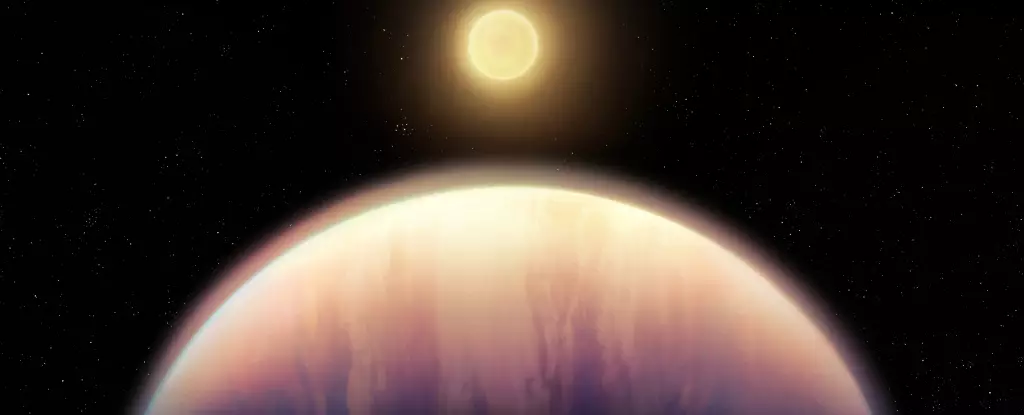The James Webb Space Telescope (JWST) stands as a beacon of innovation in astronomy, ushering in a new era of discovery that reshapes our comprehension of the cosmos. Its capabilities extend far beyond those of its predecessor, the Hubble Space Telescope, offering unparalleled insights into the atmospheres of exoplanets. This observational prowess has propelled the study of celestial bodies orbiting distant stars, allowing researchers to navigate the complexities of planetary system formations, particularly through analysis of atmospheric components.
The Significance of Exoplanet Atmospheric Studies
At the heart of exoplanet research lies the detailed examination of planetary atmospheres. JWST leverages sophisticated technology to analyze light spectrum data transmitted from a star as it filters through the gases enveloping an exoplanet. This methodology provides crucial information about the chemical makeup of these distant worlds. Recent JWST observations of the HR 8799 system have revealed the presence of carbon dioxide in the atmospheres of its gas giants, offering potent clues about the origins of these planets and their potential similarities to the gas giants of our Solar System.
Exploring HR 8799: A Window into Planet Formation
Located a striking 130 light-years away in the Pegasus constellation, the HR 8799 system has become a focal point for astronomers. This system houses one of the first directly imaged multiple-planet configurations, featuring four gas giants—designated HR 8799 b, c, d, and e—that orbit the star at varying distances. The young age of the system, at roughly 30 million years—compared to the 4.6 billion-year age of our Solar System—offers a glimpse into a formative period that may mirror our own planetary evolution.
What distinguishes the planets in HR 8799 is their substantial mass, each weighing five to ten times that of Jupiter. This raises stimulating questions about their formation processes. JWST’s findings bolster the notion that these giants likely formed through core accretion—a process where heavier elements coalesce to create a solid nucleus that subsequently gathers surrounding gas. Such insights are critical, as they can refine our understanding of how planetary systems, including our own, evolve over time.
Insights from Comparative Analysis
The research conducted by a team of scientists led by William Balmer from Johns Hopkins University pioneers a comparative study of exoplanetary systems. By analyzing both HR 8799 and 51 Eridani, the team seeks to broaden the context for understanding our Solar System. Balmer articulates a compelling vision: “Our hope with this kind of research is to understand our own Solar System, life, and ourselves in the comparison to other exoplanetary systems, so we can contextualize our existence.” This mission underscores the importance of looking outward to gain a deeper insight into the origins of our own planetary home.
The presence of carbon dioxide in the atmospheres of the HR 8799 gas giants not only supports the core accretion theory but also suggests that these planets might contain a higher concentration of heavy elements than previously anticipated. Such revelations could reshape our understanding of elemental distribution across the galaxy and further assert the significance of JWST in providing necessary data that can inspire future explorations.
The Technology Behind the Observations
JWST’s technology is nothing short of revolutionary, employing NIRCam coronagraph systems to directly image planets, an arduous task owing to the stark brightness contrast between planets and their host stars. By blocking starlight, JWST effectively reveals the faint infrared emissions from exoplanets, allowing for a more detailed study of their atmospheric compositions. This technological sophistication not only enhances our ability to study exoplanets but represents a tremendous leap forward in observational astronomy.
With nearly 6,000 exoplanets identified, JWST’s contributions to the field are increasingly vital. The ability to discern chemical signatures from these celestial bodies propels scientific understanding beyond simple discovery; it positions JWST as a tool for unraveling the complex narratives of planetary formation and evolution that bind the universe together.
Expanding Horizons in Space Exploration
Beyond its groundbreaking work on exoplanets, JWST serves a pivotal role in the broader landscape of cosmic exploration and understanding the universe’s intricate structures and origins. As the foremost space science observatory, its journey of discoveries is just beginning, promising to rewrite the narratives of space exploration and humanity’s place within it. Each new observation holds the potential for transformative insights, challenging our perceptions and inviting us to explore the vast and enigmatic tapestry of the universe.


Leave a Reply